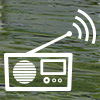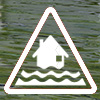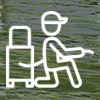Flooding is one of the most traumatic and dangerous natural disasters in the United States. In general, flooding is the number one natural disaster in the entire country, while flash flooding is responsible for approximately 200 deaths each year. From 2005 to 2014, the average flood claim was $42,000, and total flood insurance claims averaged more than $3.5 million per year.
During the floods that erupted in Texas in March and April of 2016, multiple days of heavy rainfall averaging 15 to 20 inches prompted numerous evacuations, high-water rescues, and mass destruction. More than 1,000 homes and businesses were damaged and destroyed. These dramatic weather events killed more than a dozen people, with estimated costs over nearly five billion dollars.
Be Proactive with Protection
 The physical destruction caused by any flood depends on the speed and level of the water, the duration of the flood, terrain and soil conditions, and the building environment. Transportation routes, power, water, gas and other utilities are likely to be temporarily disrupted. Drinking water supplies and wells may be polluted. Even a few inches of floodwater in a home can cause hundreds of thousands of dollars in damage.
The physical destruction caused by any flood depends on the speed and level of the water, the duration of the flood, terrain and soil conditions, and the building environment. Transportation routes, power, water, gas and other utilities are likely to be temporarily disrupted. Drinking water supplies and wells may be polluted. Even a few inches of floodwater in a home can cause hundreds of thousands of dollars in damage.
In order to minimize these types of life-threatening risks, it’s crucial for homeowners to properly prepare for a flood. The three most essential goals for protection are:
- Personal protection: evacuate in time or shelter in place as needed or recommended.
- Property protection: reduce the risk of damages to your home from flooding.
- Risk management: understand your risk and take steps to prepare for repairs.
It’s important to note that flooding can occur in any U.S. state. However, it is particularly crucial to be prepared for flooding if you live in a low-lying area near a body of water, near a coast, downstream from a dam or levy, or you live in place that is prone to hurricanes, tornadoes, or other destructive storms.
Learn How to Prepare for a Flood
 Learning how to prepare your home and family for potential flooding is a complex process, and it’s one that isn’t always intuitive. That’s why it’s important to read features like this one, do your homework, and connect with your network of storm repair professionals once it’s safe to return to your home.
Learning how to prepare your home and family for potential flooding is a complex process, and it’s one that isn’t always intuitive. That’s why it’s important to read features like this one, do your homework, and connect with your network of storm repair professionals once it’s safe to return to your home.
First, it’s important to talk to people about what to do if a flood watch or warning is issued. Discuss what you have done or will do with your family, friends, neighbors, and colleagues. Discussing floods ahead of time helps reduce fear and anxiety, especially for younger children. Talking about preparedness with others will help you think logically, share information about alerts or warnings, and expose potential risks or setbacks in your plan. Talking about natural disasters and helping others prepare makes everyone in your network safer.
Receiving and Understanding Emergency Notifications
 One of the most important tools in your flood preparation plans is a radio with extra batteries or another external source of power that can pick up weather bulletins from the National Oceanic and Atmospheric Administration (NOAA). NOAA Weather Radio All Hazards (NWR) is a nationwide network of radio stations broadcasting perpetual weather information directly from the nearest National Weather Service Office. NWR is an “all hazards” radio network, making it your best source for comprehensive weather and emergency information.
One of the most important tools in your flood preparation plans is a radio with extra batteries or another external source of power that can pick up weather bulletins from the National Oceanic and Atmospheric Administration (NOAA). NOAA Weather Radio All Hazards (NWR) is a nationwide network of radio stations broadcasting perpetual weather information directly from the nearest National Weather Service Office. NWR is an “all hazards” radio network, making it your best source for comprehensive weather and emergency information.
Now that you have a method for receiving important bulletins, it’s important to understand what emergency notifications mean. Watches, warnings, and evacuation notices are science-based predictions that are intended to provide adequate time to seek shelter or evacuate a dangerous area. Emergency notifications generally come in these categories:
- Flood Watch: Flooding is possible in your geographic area. You and your family should be prepared to move to higher ground on short notice.
- Flood Warning: Flooding is happening now or is about to happen. If advised to evacuate, do so immediately.
- Flash Flood Watch: Flash flooding is possible. You should evacuate or be prepared to move to higher ground on short notice.
- Flash Flood Warning: A flash flood is imminent or happening now. Seek higher ground immediately.
- Other Alerts: Flood watches and warnings may also be issued for specific types of flooding, such as coastal flooding or river flooding.
- Evacuation Notice: If the danger is significant, authorities may issue an evacuation notice to alert homeowners that flooding is occurring and it is important to leave the area.
How to Protect Your Home and Your Family Before a Flood
 There are lots of things you can do in advance of a flood that will decrease the risk of injury or damage in the event flooding occurs.
There are lots of things you can do in advance of a flood that will decrease the risk of injury or damage in the event flooding occurs.
Know your flood risk. It’s easy to learn whether you live, work, or travel through areas that are prone to flooding. The Federal Emergency Management Agency (FEMA) creates flood maps to how the locations of high-risk, moderate-to-low-risk, and undetermined risk areas. You can also ask the county planning division whether your home is at risk for flooding. The main factor for determining your home’s risk is whether you are in a floodplain or not.
However, keep in mind that more than 25 percent of all flood claims each year come from homes outside areas at high risk for flooding, according to the National Flood Insurance Program (NFIP).
Prepare personal emergency supply kits for your home, car, and work. Here you can find links to checklists to inform you what to assemble in your emergency kit.
Establish an evacuation route. Knowing the best ways in and out of your neighborhood and other parts of the city when it’s flooded could save your life. You’ll need to stick to higher ground if you do need to evacuate. It’s also important for all family members to know where they are supposed to meet, and that information should be written down. Go over it with your family to ensure that everyone knows what to do.
Also practice how you will communicate with your family members. During an emergency, sending texts can be faster than a phone call. All family members should also have a family contact out of your immediate area, in case information needs to be passed through a third party.
Protect Your Property. There are a wide variety of things you can do to mitigate the effects of flooding on your home and property. These include:
- Elevating major appliances and electrical outlets to keep them from being flooded.
- Creating copies of important documents including insurance policies, pictures of your possessions and home, and any other documents.
- Putting in a sump pump, which pumps out collected water from basements.
- Installing back-flow valves in drains, toilets, and sinks to prevent flood waters from coming up drains.
- Waterproofing basement walls to help keep water out.
- Storing supplies in advance so you can grab them quickly if you need to evacuate.
- Storing valuables and household chemicals at a higher location.
- Stockpiling emergency materials (plywood, plastic sheeting, lumber nails, a hammer and saw, a pry bar, shovels, and sandbags) in advance of a flood.
Manage your risk. The best way to manage your risk and protect your property is to buy flood insurance. Flood insurance is available nationwide for homeowners, renters, and business owners. Homeowner’s insurance rarely covers flood damage, so this coverage must be purchased separately. Visit Floodsmart.gov to obtain an estimate of what flood insurance may cost for your property address.
How to Keep Your Family Safe During a Flood
 Keeping your family safe during a flooding situation means keeping your head during a trying time. It’s important to remember that you may not have very much warning. If a flood is forecast and you have time:
Keeping your family safe during a flooding situation means keeping your head during a trying time. It’s important to remember that you may not have very much warning. If a flood is forecast and you have time:
- Close storm shutters, bring in any furniture or outside items, and sandbag doorways.
- Move any vehicles to higher ground if possible.
- Turn off the electricity, gas, and any other appliances that could be affected by floodwaters.
- If there is time, have the septic tank drained by a licensed sewage professional, and filled with fresh water.
- Obtain an alternate source of water sufficient for three days—at least two liters per person per day is recommended.
- Shut off the water supply to and from the hot water heater, but don’t drain the tank, as the weight will act as a ballast to keep the appliance in place.
- Empty freezers and refrigerators, leaving doors open to avoid damage or loss if they float.
- Put sand bags in the toilet bowl and over drainage holes to prevent sewage backflow.
- Protect your home as well as possible with sand bags or plastic barriers. Instructions from local emergency officials can be helpful.
When Flooding has Started

- Keep your emergency radio on to learn what areas are affected, what roads are safe, and where to go and what to do if an evacuation is ordered.
- Bring your emergency kit with you, preferably in a portable container such as a go-bag or a suitcase with wheels.
- If you are relocating, take your pets with you if it is safe to do so. If not, provide adequate food and water and move them to a safer place.
- Do not allow children to play in or near floodwaters.
- Avoid contact with floodwater, which may be contaminated with sewage or contain dangerous items.
After the Flood

- Let friends and family know that you are safe. The Safe and Well website sponsored by the American Red Cross is a useful tool.
- If evacuated, only return when authorities say it is safe.
- Continue listening to local news or an NOAA weather radio station for updated information and instructions.
- Help people who require special assistance (infants, elderly people, those without transportation, people with disabilities, and the people who care for them).
- If power lines are down outside your home, don’t step in puddles or standing water. Report them immediately to the power company.
- If any gas or electrical appliances were exposed to flood waters, don’t use them until they have been inspected by a professional.
- Dispose of any food that has been in contact with flood water.
- Take pictures of home damage, including the building, contents, and the roof for insurance purposes.
How to Clean Up a Flooded Home
 Cleaning up and repairing a flooded home is complicated, and very likely to need professional help to restore your home back to its original condition.
Cleaning up and repairing a flooded home is complicated, and very likely to need professional help to restore your home back to its original condition.
- First, be sure to wear protective clothing including rubber gloves and boots, and use caution when cleaning up.
- Research online how to clean up after a flood, including what supplies to buy, how to sanitize kitchen and bathroom surfaces, and how to repair or replace structures damaged by water.
- Be careful when moving furnishings or debris, as they may be waterlogged and heavier than you expect.
- Throw out items that cannot be cleaned (mattresses, carpeting, stuffed animals, baby toys, etc.).
- Pump out flooded basements gradually to avoid structural damage. If the water is pumped out too quickly, the basement walls could collapse from the strain.
- Have damaged septic tanks, cesspools, pits and leaching systems serviced as soon as possible, as they represent significant health hazards.
Trust your Professional Service Providers
 Some aspects of cleaning up a flooded home are simply beyond a layperson and require specialized help. A professional restoration firm like Shamrock Roofing can help with a variety of these complex processes.
Some aspects of cleaning up a flooded home are simply beyond a layperson and require specialized help. A professional restoration firm like Shamrock Roofing can help with a variety of these complex processes.
These services may include:
- Inspecting your home and property for damage that may not be immediately visible.
- Raising the furnace, water heater, and electric panel to higher floors to prevent damage. An undamaged water heater can be the best source of fresh water in the wake of a flood.
- Installing check valves in plumbing to prevent floodwater from backing up from drains.
- Constructing barriers such as levees, flood walls, and berms to stop floodwater from entering a building in the future.
- Sealing walls in basements with waterproofing compounds to avoid seepage through cracks.
- Emergency tarping to prevent subsequent rainfall from further damaging your home.
- Repairing or replacing storm gutters to ensure the safe dispersal of water.
- Installing replacement windows to repair damage and make your home more energy efficient.
Shamrock Roofing is your local, licensed general contractor specializing in residential and commercial exterior restoration following a storm or flooding event. We are always pleased to provide a free inspection of your home. If we find damage, we’ll meet with your insurance provider’s representative to review it with them, so they can determine if the necessary repairs will be covered under your homeowner’s insurance policy. In most cases, your policy will cover our services. If your storm damage is not covered, our team of professionals stands ready to provide you with a reasonable quote to get your property back to like-new condition in a timely manner.